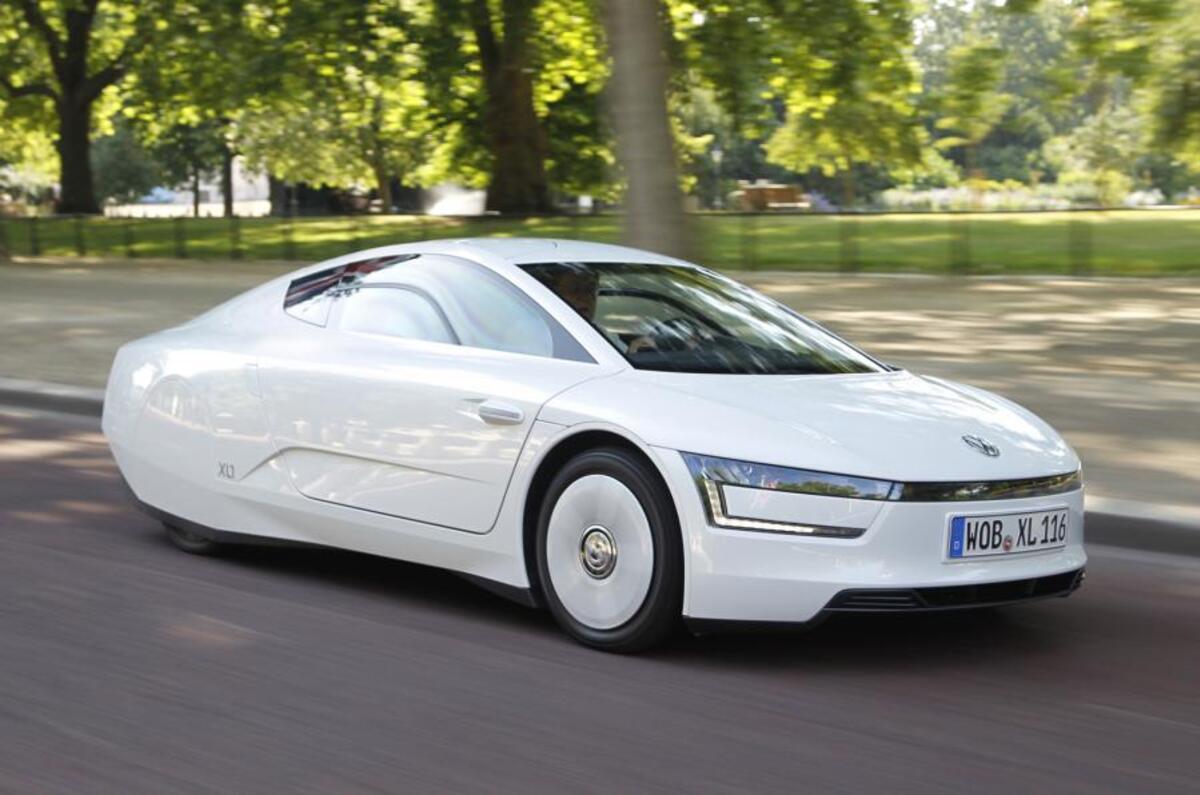The major details of the VW XL1, the German manufacturer's all-composite, 795kg, super-aerodynamic (Cd 0.189), two-door hybrid have been on the record for months.
It is a monocoque car, close enough to production for a run of 250 to have been announced, powered both by a two-cylinder, mid-mounted 800cc diesel engine producing 50bhp and an electric motor that adds another 27bhp.
The pair drive through a seamless seven-speed dual-clutch gearbox. Actually, the total clutch count is three – two in the gearbox and another between the engine and motor – to allow the car sometimes to be driven on electric power alone.
The XL1’s efficiency is already legendary: in windless conditions it needs just 8bhp to maintain a steady 62mph and it can return up to 313mpg. And yet if you were to deploy all available power it would hit 125mph, although for now it’s governed at 100mph.
From a standing start the VW will reach 62mph acceleration in a respectable 12.7sec; indeed, as soon as we start our drive, it becomes clear that the XL1 delivers normal-to-brisk performance.
The XL1’s all-up weight of 795kg is impressive, but its aerodynamics are even more staggering. Thanks in part to a frontal area barely two-thirds that of a Volkswagen Polo, its drag factor is half that of equivalent cars.







